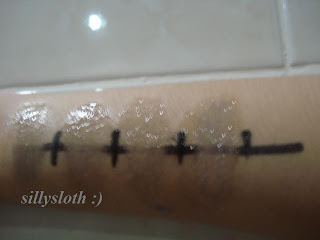
Unlike it's hard to use relative (Seche Vite), I actually like Seche Restore. With Seche Vite, I get awful goopy results, along with any other quick dry top coats.
Use Seche Restore to thin out your old polishes and resurrect them from their old, dried, clumpy state. Unfortunately, this comes with a couple of cons.
1. The packaging is horrible.
Look at the picture. To the right is the pipette for the Restore. I have no place to put it, so I keep the original packaging since I don't want it out in the open.
2. If you look at the ingredients list or the warning label, you will see that it contains toluene. It says that this product may "cause cancer, birth defects or other reproductive harm." A quick search on the internet shows that toluene can cause neurological damage. Also, due to schoolwork, I have found that substances such as toluene can cause taste and smell disorders. It may not seem like much compared to the others, but it IS a valid concern, and the one I'm most worried about right now.
I will not repurchase this product, though it does work (though I have been doing worse, what with my constant exposure to formaldehyde :( ). It's not worth the risk. Hopefully, they will find something better to replace it. Good bye old polishes. At least until something better comes out.
TIP: DO NOT over expose yourself to your nail stuff. Once a month will do and be sure to have open air circulation.
On that note, given the love of air conditioning, how many nail technicians have been overexposed to toluene and the like?







